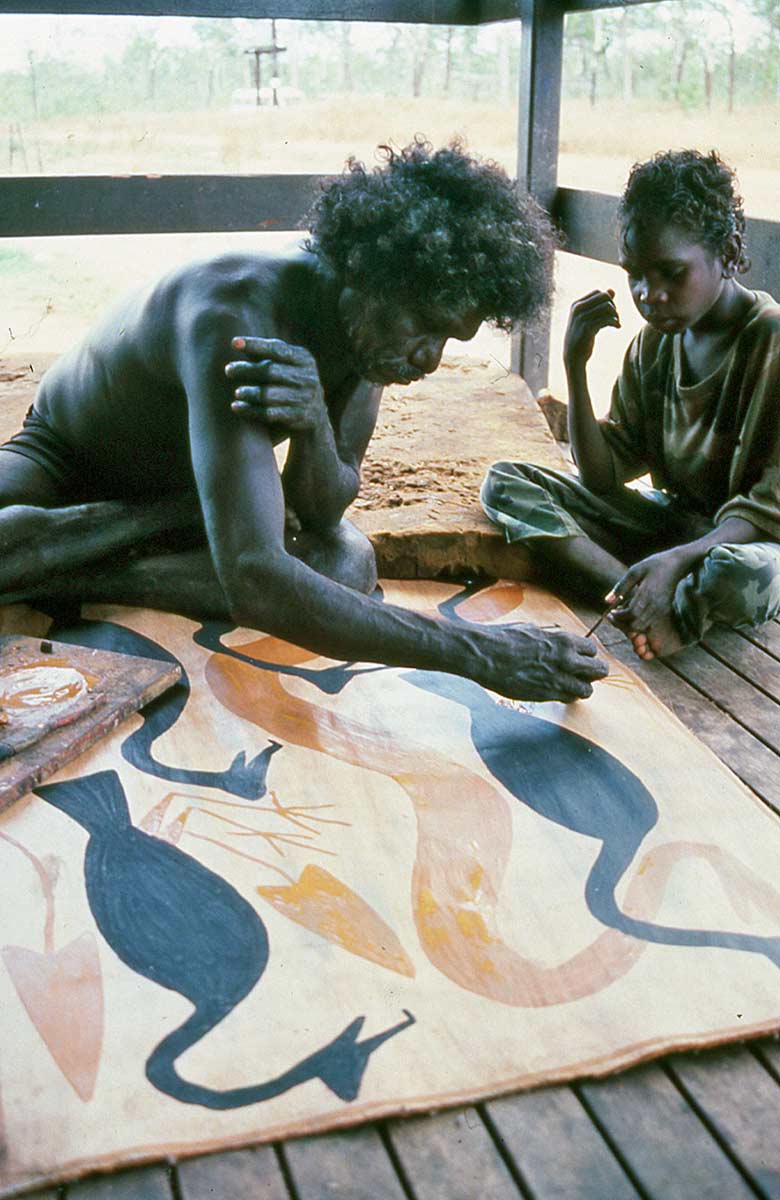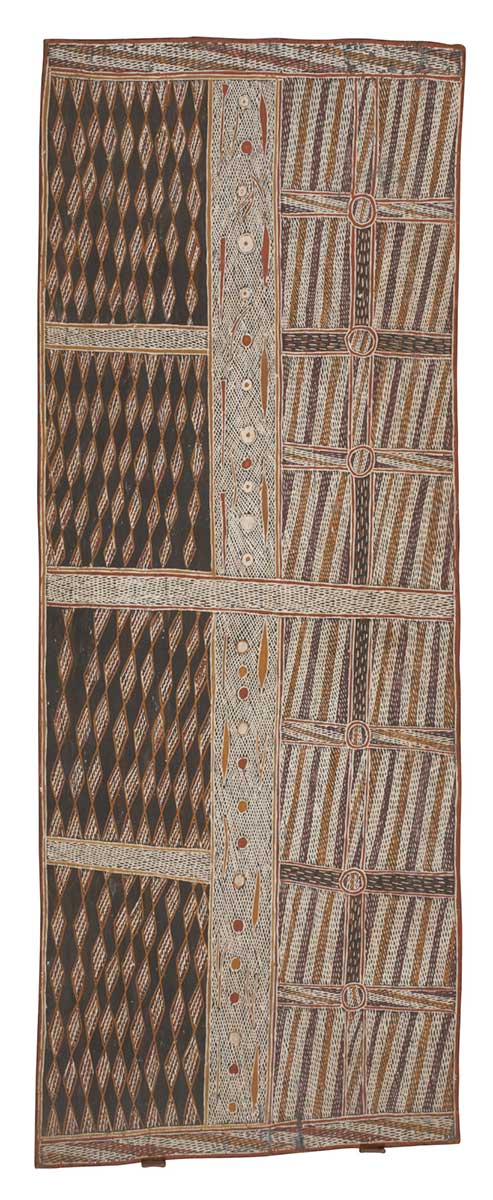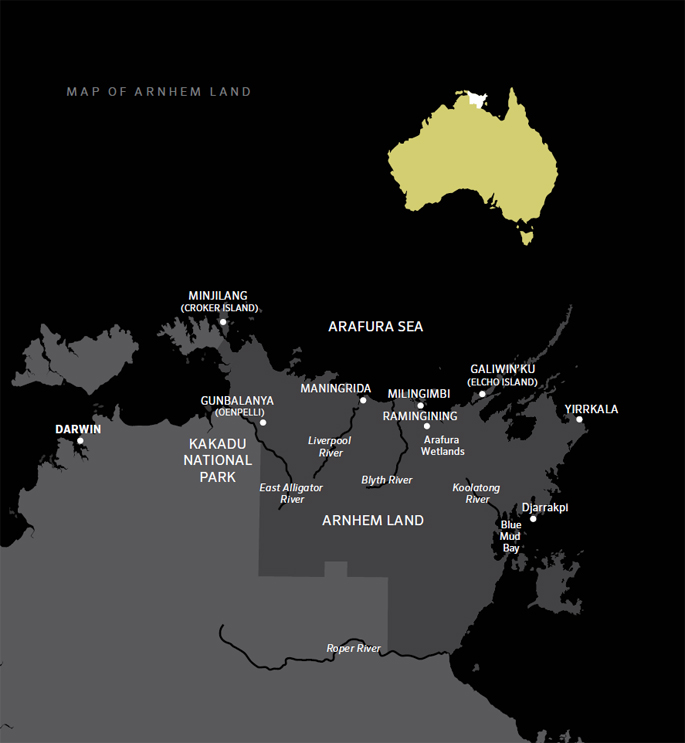
Old Masters spans a critical period in the history of the art of Arnhem Land and its peoples, from 1948 to 1988.
The Second World War is a significant historical marker for the people of Arnhem Land, due to the bombing of Darwin and parts of the northern coast of the region.
Anthropologists arrived after the war, and were followed by the collectors, both private and public, to see at firsthand the art of Arnhem Land, and to meet its creators and collect their work. They took their art to new audiences, in Australia and abroad.
The National Museum of Australia opened to the public in 2001. By and large its collections have been confined to storage, and many of the artists have been little-known outside their communities.
Nonetheless, over the past decades the old masters in this exhibition have attracted the attention of the art world and the public at large; and recent generations of Arnhem Land bark painters continue to build on their artistic heritage, taking their art in new directions while building on past achievements.
Old Masters is a small taste of the Museum’s collection of bark paintings; it is but a sample of the richness, diversity and complexity of Indigenous cultures across Australia. Through this exhibition, the Museum encourages all Australians to share in the history and culture of Indigenous Australians.

Identity
The expression of identity is a recurring theme in bark painting. It personalises the subject of a painting to allow the viewer to see ‘through the artist’s eyes’.
Identity is defined by a person’s family ties, clan membership, descent from a particular ancestor, attachment to country, and social and ritual status. It is expressed in painting through the same patterns of clan designs that are painted onto a person’s body in ceremony.
These designs also show the moiety to which the artist belongs. Djunmal’s painting The Djan’kawu Cross Back to the Mainland symbolises the complementary roles played by the moieties.
The design on the right shows the Djan’kawu ancestors associated with the artist’s Dhuwa moiety. It represents the paths they travelled as they created the first peoples and the freshwater wells (the circles in the painting).
The Yirritja moiety design on the left represents mangrove worms in the brackish waters where fresh water meets salt water.

Arnhem Land
Arnhem Land lies in the subtropical north of the Australian continent. The physical environment varies from the rocky escarpment in the west, extending into Kakadu National Park. To the east lie the savannah forests and the Arafura Wetlands of central Arnhem Land. Chains of islands lead to the eastern coast of Arnhem Land and south to Blue Mud Bay.
From 1916 to the 1970s, missions and settlements were established throughout the region. In 1931 the Australian Government declared Arnhem Land an Aboriginal Reserve, and with the introduction of land rights in 1976 many Aboriginal people returned to live on outstations on their traditional lands. The settlements continue to provide resources, including art centres for the outstations.
Pronunciation and spelling
The peoples of western Arnhem Land refer to themselves collectively as Bininj, and those in central and eastern Arnhem Land as Yolŋu. Their languages have special sounds, which are represented in this website and the catalogue in written form using a particular set of characters and symbols, or diacritics. These sounds are pronounced as follows:
galpu (spear-thrower): garl – pu
Gälpu (clan name): Gaal – pu
Yolŋu (the people): Yuul – ngu (‘ng’ as in ‘sing’)
Ngalyod (the ancestor): Ngal – yod (‘Ng’ as in ‘sing’)
Djan’kawu (the ancestors): Jahn – kawu`
There are regional differences in spelling. For example, the moieties (the basic social divisions) in western Arnhem Land are Duwa and Yirridjdja, and in eastern Arnhem Land, Dhuwa and Yirritja. Similarly, the ancestors known as the Wägilak Sisters in central Arnhem Land are the Wäwilak Sisters in the east.